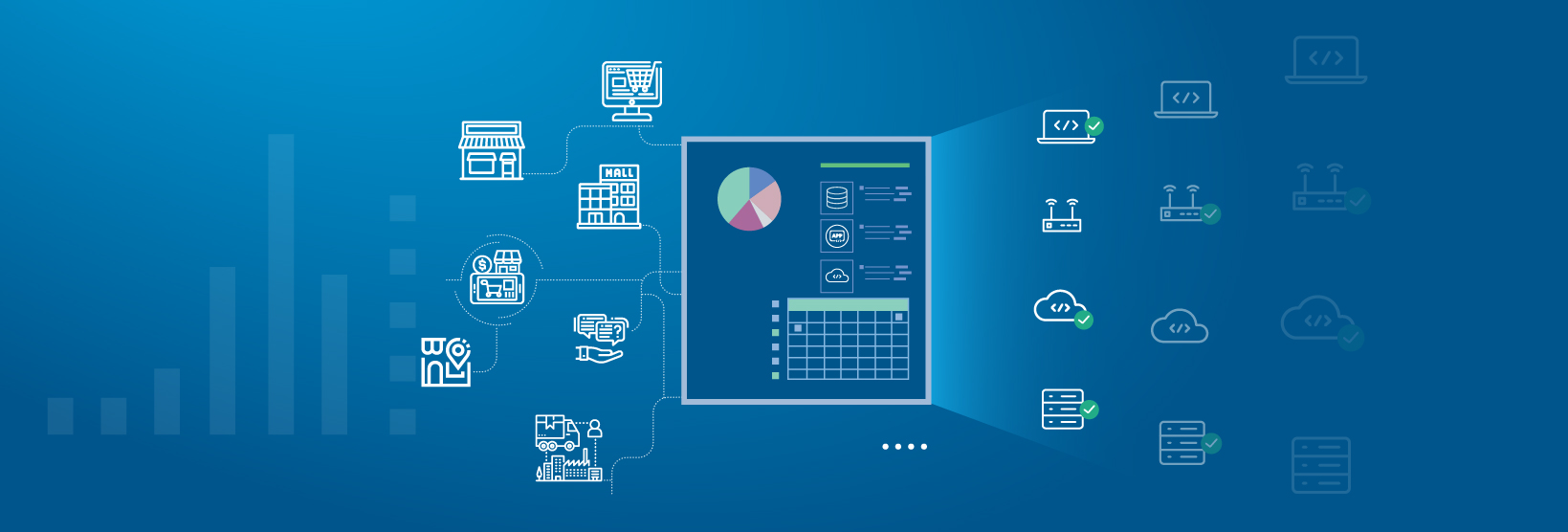Large retailers today have more applications, networks, and systems to monitor than ever before: emerging trends including “extended reality” and robots that help customers find merchandise, keep shelves stocked and fulfill orders faster in warehouses. Retailers are racing to upgrade existing customer data management technologies and adopt emerging platforms like augmented and virtual reality (AR/VR) and AI-enhanced visual search to meet customers’ demands in the growing online retail market. In truth, retailers are at an inflection point of complexity, digitization, and competition like never before.
To complicate this picture, network interruptions and downtime now have increasingly disastrous effects on the retail business. Just one disruption can put the business at risk of falling out of PCI compliance, which can carry monthly penalties of six figures or more—not to mention brand and reputational damage which can have long-term impacts on the bottom line.
So with all these challenges, how can retail IT operations teams work more effectively?
Hybrid cloud brings its own benefits and challenges
Just like progressive businesses in other sectors, retailers have been embracing the cloud to help support rapid digital growth. Hybrid cloud infrastructure, combining on-premises and cloud-based platforms, has become popular to support common business applications like customer loyalty, point-of-sale (PoS) and customer relationship management (CRM) platforms. This gives IT teams the flexibility to run best-of-breed SaaS solutions for salesforce management and marketing functionality while still maintaining internal control of sensitive customer data. The cloud is also helping retailers affordably launch new customer-facing applications that demand scale and speed.
But there are problems with this distributed infrastructure. It’s harder to gain a centralized view of operational intelligence to support network uptime, security and fraud monitoring, and customer experience management.
While many organizations might believe the cost of a comprehensive IT management platform is prohibitive, the cost to a business of not using one is often much greater. For example, every minute of PoS downtime costs retailers an average of $4,700 per minute in lost sales and diminished productivity.
System and data disconnects—along with supplier issues and other factors—already contribute more than $250 billion in losses from overstock or out-of-stock each year because companies lack a system for tracking and sharing this information. Customer defections are also common when websites or apps don’t perform well. In fact, approximately 50% of retail customers will avoid a retail brand in the future if they’ve had to wait more than five minutes for their shopping experience.
Meeting customer needs in the moment wherever they are and with fresh experiences is a key strategy, yet this brings about increased complexity from a data management and systems performance perspective. Retail IT leaders need modern infrastructure platforms to deliver superior digital experiences.
OpsRamp is at the Consumer Goods Forum (CGF) Springboard in New York today, hosted by Sapphire Ventures. We’re learning about retailers’ needs and also sharing how our hybrid infrastructure management platform can help retailers stay on top of the ever-moving game of connecting with fickle consumers.
With OpsRamp, IT teams have a unified platform for managing all aspects of their hybrid IT environment. OpsRamp centralizes the discovery, monitoring, automation and reporting in one place for greater business agility, visibility across systems and applications, and a seamless omnichannel customer experience.
Next Steps:
- Read our coverage of the Top ITOps news of 2019.
- Learn what OpsRamp was doing and writing about in December.
- Follow OpsRamp on Twitter and LinkedIn for real-time updates and news from the world of IT operations.







